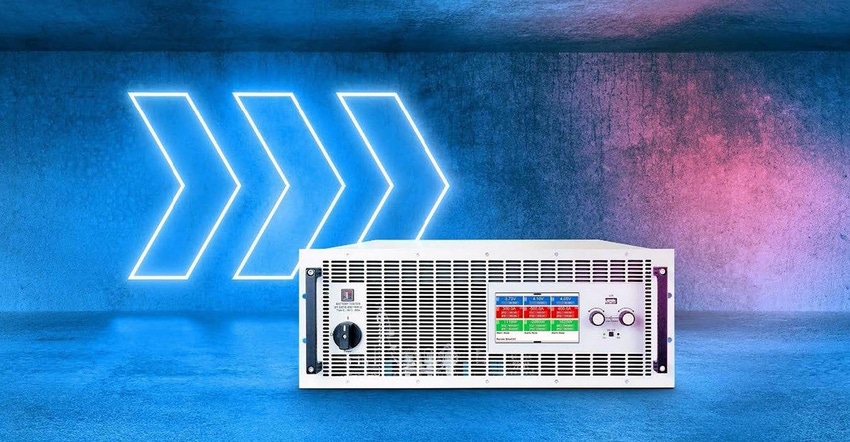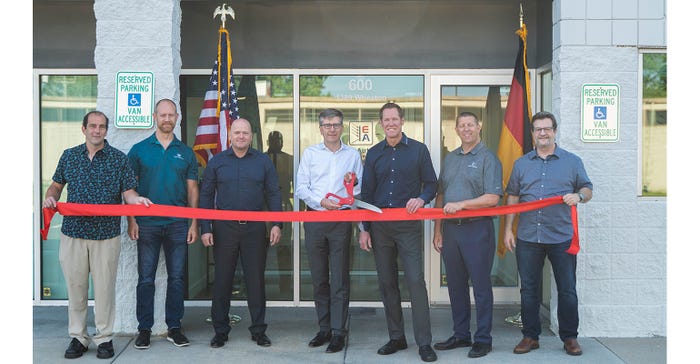How Power Supplies Add Bang to the Battery Boom
Elektro-Automatik bidirectional power supplies and new, higher-density, equipment help battery makers and users make new inroads.
July 24, 2023

Amid the current boom times in global battery business development and applications, it pays to keep in mind advances being made and support being given by the non-battery equipment sector.
Elektro-Automatik (EA; formally the EA Elektro-Automatik Group) provides programmable power supplies and electronic loads from its headquarters in Viersen, Germany, and support locations in the US (San Diego, CA, and Troy, MI), China, and others.
EA’s Troy office opened last summer, and Battery Technology recently paid a visit to get an update on what’s new and better understand the role of a power supply company and its role in industry electrification.
Asked if the Troy location was an automotive office, national sales manager Dave Basile replied, “It’s definitely not all automotive applications, but rather transportation. Certainly, automotive, but trucking, agriculture, energy storage from solar and wind power, and even aerospace and defense all have applications for power supplies and electronic loads.”

Roles in battery testing and recycling
In addition to supplying power, think of a power supply as a regulatory device necessary for converting an electric current from a source to the proper current, voltage, and frequency to power a load. They figure large in battery testing as well as power safety—keeping levels safe by limiting the current drawn by a load or even shutting it down in an emergency.
“We also have a role in battery recycling,” adds Russ Gaubatz, senior applications engineer, SME. “There’s usually a sizeable number of end-of-life batteries involved, all at different stages of charge. The old way was to hook up a big resistor to these batteries and burn the remaining energy off as heat. We can hook up a bidirectional power supply or regenerative load to the batteries and transfer that power to the grid or even create a grid storage cell. We’ve seen such cells fitted into shipping containers with solar collection added and shipped off to third-world locations as microgrids to power the village water supply or small clinic for example.”
Increasing tank lethality
Power supplies also figure into ongoing application development for tanks and other military vehicles. Last summer, engineers from the U.S Army’s DEVCOM Ground Vehicle Systems Center at the Detroit Arsenal, together with their counterparts at Command, Control, Communications, Computers, Cyber, Intelligence, Surveillance and Reconnaissance (C5ISR) Center, held a demonstration on microgrid technology for providing on-the-move power generation for a variety of military vehicles.
The goal is to show that creating mobile vehicle power networks with on-board power generation and export power capability provide more power resilience while lowering the logistical burden, DEVCOM said in a release on the demonstration. The short conclusion in non-military speak: tanks become harder to spot and easier to position and coordinate.
The conventional means for a combat vehicle group’s power generation involves towing power generators in a trailer. The new approach, labelled STAMP (Secure Tactical Advanced Mobile Power) involves on-board power generation and storage, generating the ability for multiple vehicles to network their electrical systems to increase effectiveness and save fuel.
“Legacy tactical power systems decrease combat system availability, create a vulnerable static posture, lack energy storage, lack consumption awareness, and impose challenging logistical requirements,” Dean McGrew, GVSC’s Powertrain Electrification Branch Chief, stated. “With microgrid technology, vehicle in-line generated power supply replaces towed generator power while vehicle networked power can be used for onboard vehicle needs and exported for off-vehicle use. Integrating power generation, distribution, battery storage, metering, control systems, and on-board vehicle power from mobile tactical platforms into an AC/DC microgrid will enhance resiliency, mobility, and flexibility of tactical units to execute distributed cross-domain maneuvers in multi-domain operations.”
More power, smaller footprint
Energy density in power supplies is an EA differentiator, Gaubatz and Basile explained. Last November, the company announced new 30 kW programmable power supplies and regenerative loads in a 4U enclosure (a U is defined as 1 3/4 inches or 44.45 mm high for rack mounting) and 60 kW models in a 6U enclosure, “far and beyond the highest-density units available,” they said.
This past May, EA introduced the EA-BT 20000 Triple Battery Tester, the only battery tester instrument with three channels and the highest voltage and current outputs. According to the company, EA-BT 20000 Triple Output Battery Testers address the full range of battery life cycle from materials research to battery development, manufacturing, incoming inspection, and second-life battery recycling. The EA-BT 20000 can test individual cells, battery modules, and large battery packs for basic research and industries, including the automotive industry, the aerospace industry, and consumer renewable energy systems.
EA is planning more announcements and product demonstrations at their booth at The Battery Show, Sept. 12–14, in Novi Michigan’s Suburban Collection Showplace.
About the Author(s)
You May Also Like





